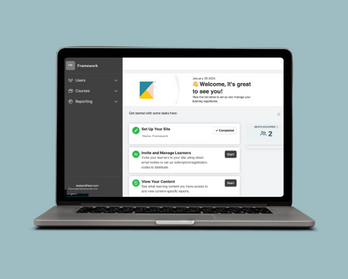This is part of our ongoing series on mortgage relief options and how to handle your loan in a crisis.
With so many people out of work due to COVID-19, more than 4 million homeowners requested a forbearance to put their mortgage payments on hold for at least a few months.
However, a forbearance is a pause in your payments, not a removal of them. You’ll need to catch up on what you missed.
Luckily, there are a few loss mitigation options to pay back what’s owed after a forbearance, including a loan modification, which changes the terms of your loan to make it more affordable, and a repayment plan, which spreads the amount throughout a period of time. (For more information, check out our post on loss mitigation.)
But in some cases, the amount is due in a single “lump-sum” payment – technically referred to as a “reinstatement.”
Lump sums may sound a little intimidating, but depending on who owns your loan, you may not be asked to pay one.
For example, borrowers with mortgages backed by Freddie Mae or Fannie Mac, the US Department of Agriculture (USDA), the Federal Housing Administration (FHA), or the US Department of Veterans Affairs (VA) are not required to make a lump-sum payment at the end of the forbearance period, unless they can afford it or choose to do so.
If you have a private mortgage, you can still request an alternative option other than a lump sum.
Regardless of whether your mortgage is backed by a federal agency or a private lender, it’s best to be proactive and call your servicer to work out a repayment option at least 30 days before a repayment period ends. Some agencies require servicers to make the effort to reach out to their customers, but servicers are overwhelmed by COVID-19 just like the rest of us, so it’s safer for you to take the initiative and contact them.
(Heads up: Why do we say “servicer” instead of “lender”? In today’s market, it’s common for lenders to sell your loan rights to third-party servicers who then manage your loan payments.)
Government guidelines
For those with federally backed mortgages, here are more details on each agency’s guidelines as of June 2020:
- Fannie Mae and Freddie Mac loans: Borrowers must be evaluated for loss mitigation options at least 30 days before their forbearance ends.
- FHA loans: Borrowers must first be evaluated for a COVID-19 National Emergency Standalone Partial Claim. A partial claim is an interest-free loan that doesn’t need to be paid back until the first mortgage is paid off or when a home is sold. If you don’t qualify for a partial claim, your servicer can review other loss mitigation options.
- USDA loans: Borrowers must be evaluated for a repayment plan or other loss mitigation option.
- VA loans: Borrowers must be evaluated for loss mitigation options at least 30 days before their forbearance ends. (Have a VA loan? Check out our post on assistance for VA loans during COVID-19.)
As we stated earlier, the key thing is to remain in contact with your servicer. There’s no need to wait for your servicer to call you to figure out how to pay back your missed payments after a forbearance.
Where to get help
Check your monthly mortgage statement for your loan servicer’s contact info. Your servicer is required to respond to your request for help.
If you have a VA loan, you can reach a VA loan technician at 877-827-3702. If you have an FHA loan, you can call the FHA Outreach Center at 800-225-5342. For a USDA loan, call 800-414-1226.
If you feel like you need more help or something doesn’t seem right to you, you can get free help with your mortgage and other housing issues from a housing counselor through the Consumer Finance Protection Bureau (CFPB). Check out our guide to housing counselors for more information.
If you feel like your servicer is not offering appropriate repayment options, you can file complaints with the CFPB and your state attorney general’s office.
- Hearing mortgage relief offers that your gut doesn’t quite trust? We explain how to spot a mortgage relief scam.
- Need a break from all of this? Check out our tips for meditating at home.




